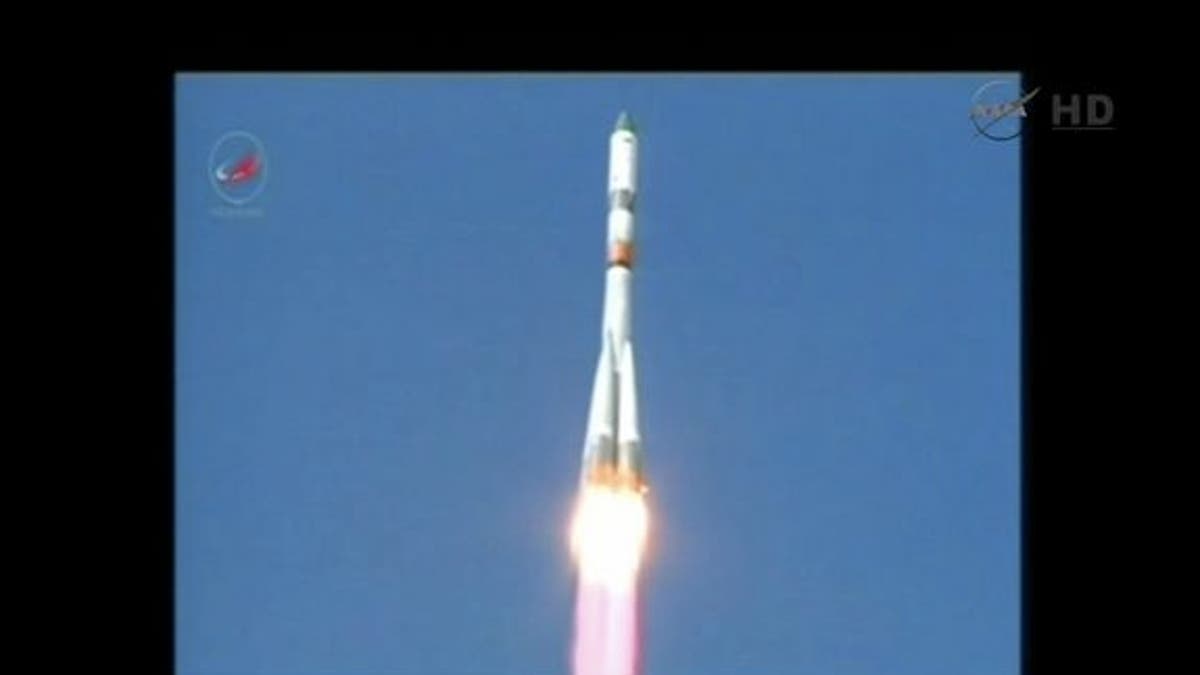
A Russian Soyuz rocket carrying the unmanned Progress 57 cargo spacecraft rises into the sky above Baikonur Cosmodrome in Kazakhstan on Oct. 29, 2014. (NASA TV)
An unmanned Russian supply ship launched toward the International Space Station early Wednesday (Oct. 29), beginning a six-hour cargo delivery that comes one day after a private U.S. rocket exploded while attempting a similar mission.
The robotic Progress 57 spacecraft blasted off from Baikonur Cosmodrome in Kazakhstan atop a Russian Soyuz rocket at 3:09 a.m. EDT to begin its space station mission. The spacecraft is carrying nearly 3 tons of supplies for the space station's Expedition 41 crew and is expected to link up with the orbiting lab at 9:09 a.m. EDT.
Russia's successful Progress launch followed the disappointing failure of a U.S. commercial Antares rocket one day earlier. Built by the Virginia-based company Orbital Sciences Corporation, the Antares rocket exploded about 10 seconds after lifting off from its launch pad at NASA's Wallops Flight Facility on Wallops Island, Virginia. An investigation into the launch failure is ongoing.
Nearly 5,000 lbs. of space station supplies aboard a robotic Cygnus cargo ship that sat atop the Antares rocket were destroyed when the booster exploded. But that lost cargo, NASA officials said, won't put the space station crew in any danger of running out of food, water or air. [See photos of the Antares rocket explosion]
"The crew of the International Space Station is in no danger of running out of food or other critical supplies," Bill Gerstenmaier, NASA's associate administrator for human exploration and operations, said in a statement.
In a press conference just after the Antares launch failure, NASA station program manager Mike Suffredini told reporters that the orbiting laboratory has enough supplies to sustain its crew through at least March 2015, even without the Progress 57 spacecraft launching today and a planned U.S. SpaceX Dragon capsule launch in December.
Russia's Progress cargo ships and the U.S. Cygnus and Dragon vehicles form just part of the robotic cargo ship fleet that supports the International Space Station. Japan's space agency also delivers supplies to the station using its H-2 Transfer Vehicle cargo tugs. The European Space Agency also launched five huge robotic cargo ships to the station between March 2008 and August 2014, when the fifth and final mission flew.
The Progress 57 cargo ship will orbit the Earth four times before arriving at the space station. You can watch the docking webcast live on Space.com, courtesy of NASA TV. The webcast will begin at 8:30 a.m. EDT (1230 GMT).
